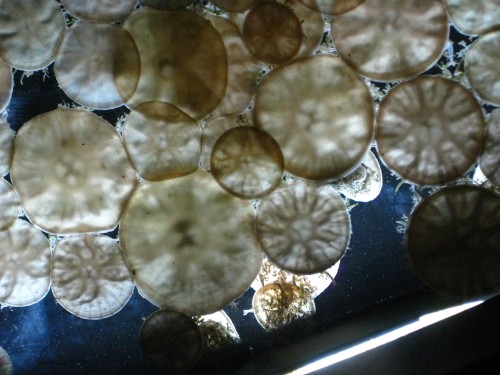I have two pet African dwarf frogs. Their names are Swimmer and Hop. Swimmer is the bigger one. Sometimes it is hard to tell which is which if they are not right next to each other, but I think the one in the picture above is Swimmer. The frog in the pictures below is Hop.
I got them as a birthday present from my Grandma Miller. I was really excited when I got them because I always wanted a pet animal from Africa.
The scientific name for this kind of African dwarf frog is Hymenochirus boettgeri and it is also called dwarf African frog and Congo dwarf clawed frog, but they are not the same as African clawed frogs, which are much bigger.
African dwarf frogs stay underwater almost all the time. They have to breathe air, so they swim up to the surface to take a breath every once in a while. All four of their tiny feet are webbed so they can swim really well. They are brownish-greenish with dark spots on their backs, and they are white on their belly. They are scavengers and they eat almost anything that is living or dead. They don’t have a tongue or teeth. They swallow their food whole.
At our house, the frogs live in a small tank by themselves. There is a big blue rock in the middle and a piece of bamboo in the corner that they like to hide behind.



















 RSS Feed
RSS Feed Facebook
Facebook Twitter
Twitter Subscribe by e-mail
Subscribe by e-mail